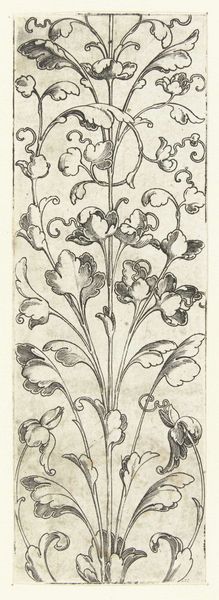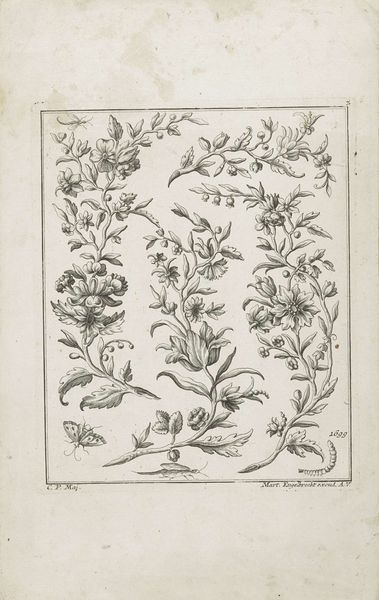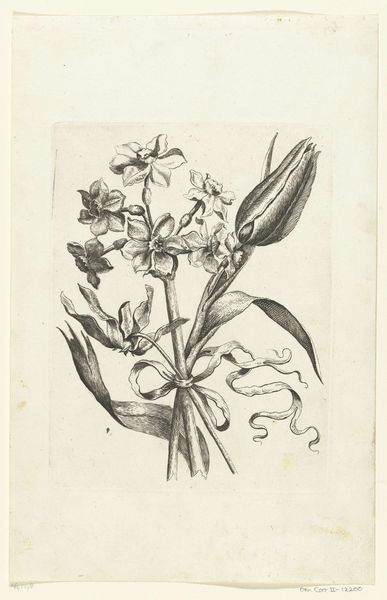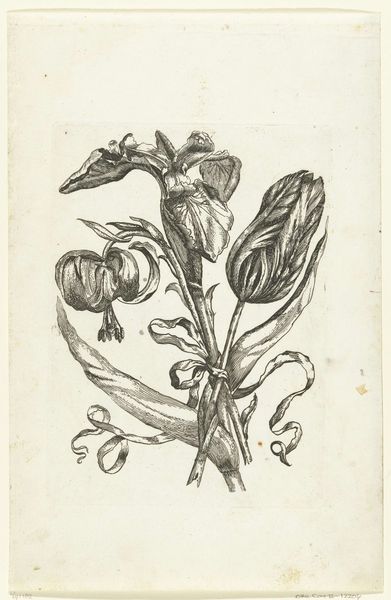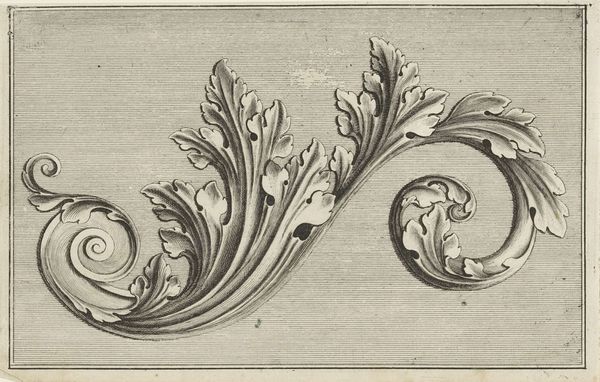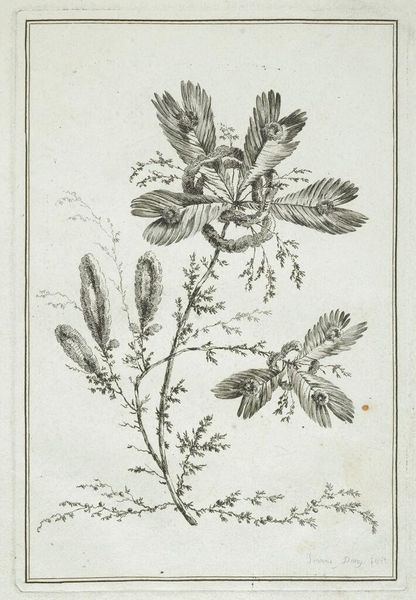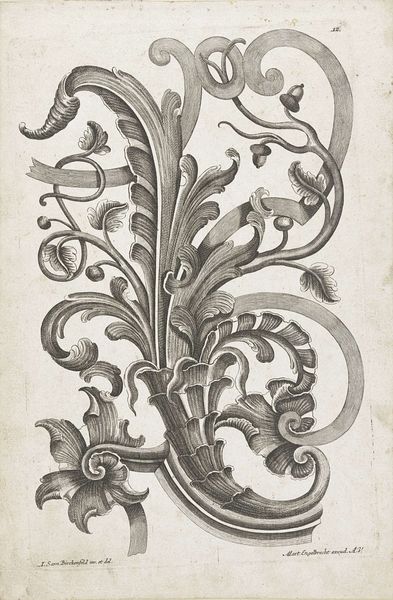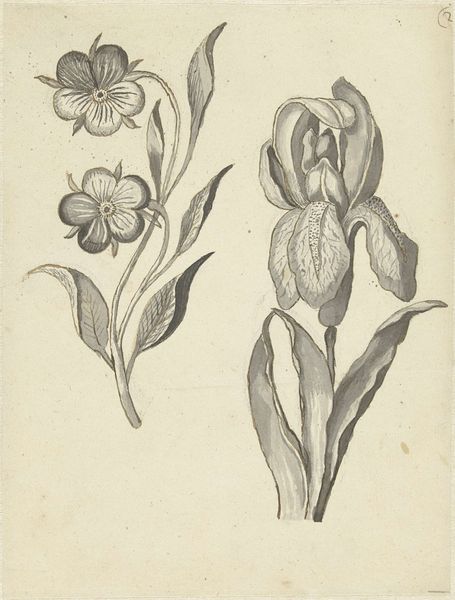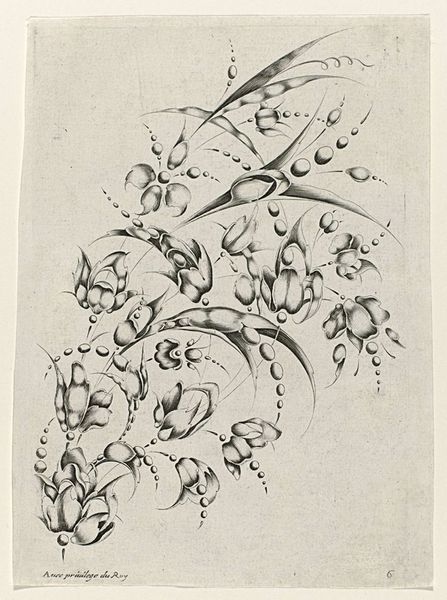
drawing, paper, ink, pen
#
drawing
#
baroque
#
pen drawing
#
paper
#
ink
#
pen work
#
pen
#
genre-painting
Dimensions: height 197 mm, width 156 mm
Copyright: Rijks Museum: Open Domain
Curator: Looking at this drawing, I immediately feel like I'm peeking into an alchemist's journal or perhaps an enchanting apothecary's catalog. It's titled "Tijgerlelie en gemene Bolderik," or "Tiger Lily and Common Corncockle," and it was rendered in pen and ink on paper sometime between 1683 and 1733. Editor: It strikes me as strangely haunting for a floral study! Is it just me, or is there something slightly melancholic about the drooping lily and the dark shading? The details almost seem exaggerated, like they're trying to say something. Curator: I see that melancholy too! It likely comes down to the common visual language used to categorize vanitas imagery within baroque symbolism: dying or cut flowers representing the brevity of life, often contrasted by menacing iconography. We see it rendered so vividly through Picart's technique. Editor: The bold lines definitely amplify that feeling. You almost feel the texture of the petals. And 'corncockle,' the name itself has such an ancient, almost sinister ring to it, doesn't it? I suppose this wasn’t intended to be just an illustration? Curator: Certainly. This piece speaks volumes beyond simple botanical accuracy; note how both the tiger lily and corncockle had extensive uses in traditional medicine, carrying multiple meanings related to life, death, and rebirth depending on different cultures’ medicinal folklore. Consider the time period, rife with exploration but still clinging to old folk knowledge—visual elements of both can be simultaneously present. Editor: Wow. So, it's almost like Picart is giving us a visual poem about duality and mortality. Seeing the flower details now reminds me of pressed flowers in an antique spellbook—a beautiful but ultimately somber reminder. Curator: Precisely. Bernard Picart's rendering doesn’t just record natural form; it encodes the anxieties and enduring questions around humanity’s fate. We often bring expectations when approaching the image; but our visual intuition also often delivers more relevant emotional conclusions. Editor: I'll definitely look at flower drawings differently now. It makes me want to grab my own sketchbook, go sit in a garden and draw my own contemplations about life’s impermanence.
Comments
No comments
Be the first to comment and join the conversation on the ultimate creative platform.
